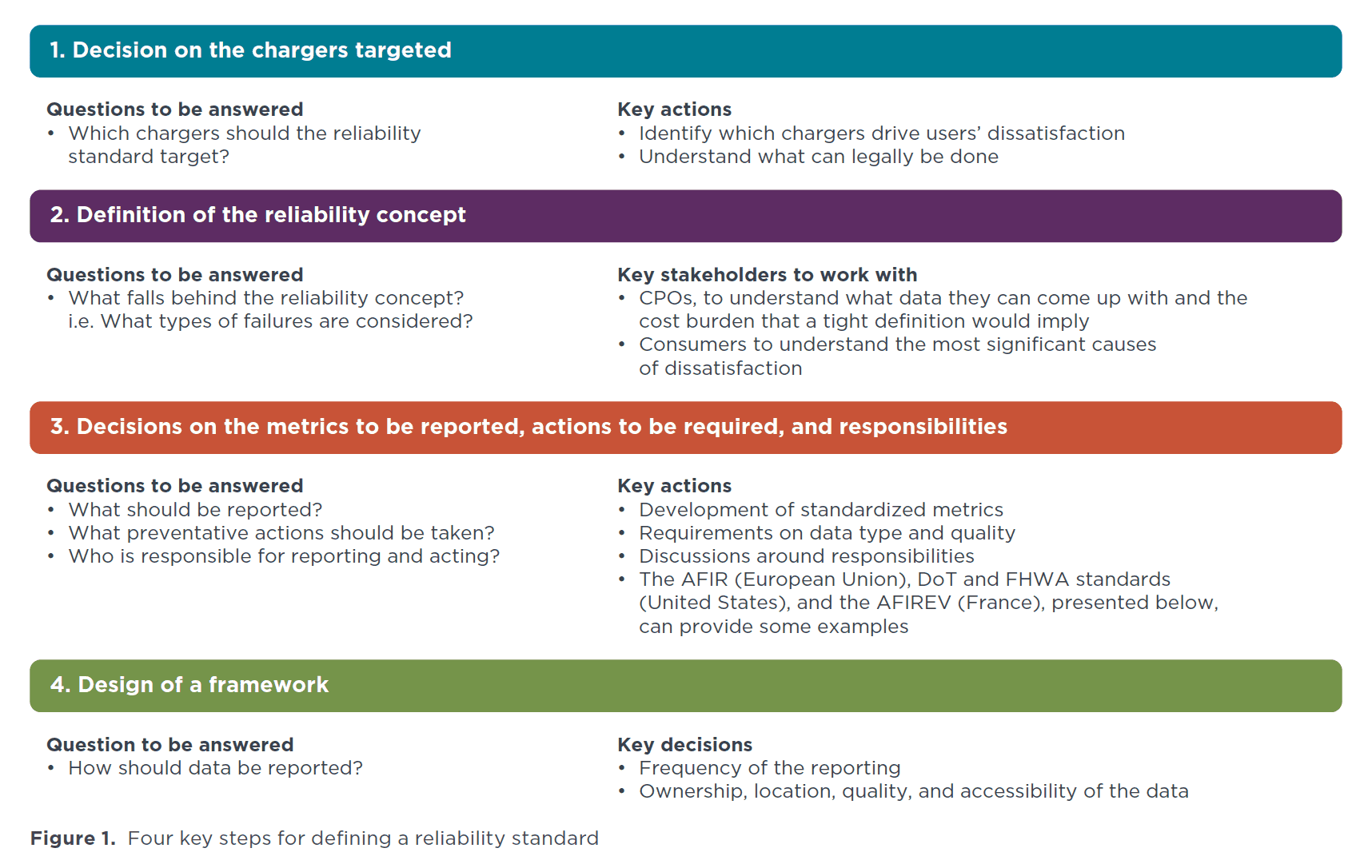Briefing
Improving public charging infrastructure reliability
The reliability of public chargers should be assessed and improved to ensure problems do not hinder the transition to electric vehicles. This briefing summarizes issues concerning the reliability of publicly accessible charging infrastructure, reviews actions taken to address these problems in select jurisdictions, and provides a framework to define a reliability standard.
Several malfunctions can be encountered when attempting to charge an EV at a public charger. Understanding the different types of failures, their causes, and who is responsible for their correction is key to increasing public charging reliability. Regulators can address issues that affect charging reliability using various approaches, including third-party performance tests, and consumer education. Jurisdictions can also develop performance standards and reporting requirements for publicly funded chargers or chargers on public land. Four key steps should be considered when defining a reliability standard and are presented in the figure below.
Several jurisdictions have begun developing charging reliability standards. These standards include uptime requirements, reporting obligations, and data accessibility to improve overall charging network reliability. Jurisdictions can benefit from knowledge sharing and alignment on reliability standards.

